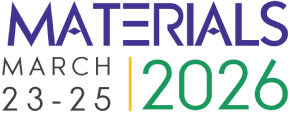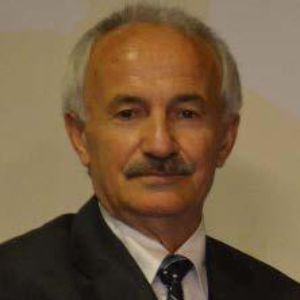Title : Shape reversibility and fundamental characterization of shape memory alloys
Abstract:
A series of alloy systems take place in a class of functional materials with stimulus response to external effect. Shape memory alloys take place in this group by exhibiting a peculiar property called shape memory effect. These alloys have dual characteristics, shape memory effect and superelasticity, from viewpoint of reversibility. These phenomena are characterized by the recoverability of two certain shapes of material at different conditions. Shape memory effect is initiated with thermomechanical processes on cooling and deformation and performed thermally on heating and cooling, with which shape of material cycle between original and deformed shape in reversible way. Therefore- this behavior can be called Thermal Memory or Thermoelasticity. This phenomenon is result of successive thermal and stress induced martensitic transformations. Thermal induced martensitic transformation occurs on cooling with cooperative movements of atoms by means of lattice invariant shears in <10 -type directions on the 110 - type planes of austenite matrix, along with lattice twinning reaction and ordered parent phase structures turn into the twinned martensite structures. The twinned structures turn into the detwinned martensite structures by means of stress induced martensitic transformation, with deformation in the martensitic condition. Shape memory alloys become noticeable as smart materials in mechanical applications in many fields of industry. These alloys exhibit another property called superelasticity, which is performed with stressing and releasing material in elasticity limit at a constant temperature in parent phase region, and shape recovery is performed simultaneously upon releasing the applied stress. Superelasticity is performed in non-linear way; stressing and releasing paths are different in the stress-strain diagram, and hysteresis loop refers to energy dissipation. These alloys are functional materials with these properties and used as shape memory elements in many fields from biomedical to the building and aviation industries as an energy absorber. Superelasticity is also result of stress induced martensitic transformation and ordered parent phase structures turn into detwinned martensite structure with stressing in the parent phase region.
Noble metal copper- based alloys exhibit this property in metastable β-phase region. Lattice invariant shear and twinning is not uniform in these alloys and gives rise to the formation of complex layered structures. The layered structures can be described by different unit cells as 3R, 9R or 18R depending on the stacking sequences on the close-packed planes of the ordered lattice. The unit cell and periodicity are completed through 18 layers in direction z, in case of 18R martensite in ternary copper-based shape memory alloys, and unit cells are not periodic in short range in direction z. In the present contribution, x-ray diffraction and transmission electron microscopy (TEM) studies were carried out on two copper- based CuAlMn and CuZnAl alloys. X-ray diffraction profiles and electron diffraction patterns exhibit super lattice reflections, inherited from the parent phase structures, due to the diffusionless character of transformations. Critical transformation temperatures of these alloys are over the room temperature and specimens were aged at room temperature. A series of x-ray diffractograms were taken in a long-time interval, and these diffractograms show that diffraction angles and intensities of diffraction peaks change with the aging duration at room temperature. This result refers to the rearrangement of atoms in diffusive manner.
Keywords: Shape memory effect, martensitic transformation, thermoelasticity, superelasticity, lattice twinning, detwinning.
Audience Take away Notes:
- Shape memory effect is a multidisciplinary subject and shape memory alloys are functional materials and used in many fields from biomedical to the building industry with dual characterization, thermoelasticity and superelasticity. Therefore, usually I introduce the basic terms and definitions at the beginning of my talk, so that the audience can gain elementary knowledge about the shape memory phenomena. After that I introduce the experimental results performed on the used alloy samples



